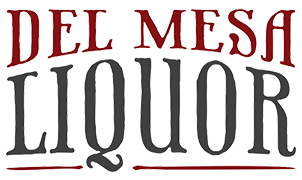The main meal, appetizer, and dessert are probably already decided if you are planning a dinner party. You have also selected entertainment and music from your list. The only thing left is choosing the best wine for your celebrations.
On the other hand, it adds to the romance if you are planning a dinner date. Wine with a touch of romance makes for the ultimate date. It calms the tongue and warms the heart. Choose a chilled wine if you are going on a date.
Here are a few suggestions to help you plan the perfect wine dinner for two at a restaurant or a peaceful wine meal at home.
How, then, can you choose a wine that will satisfy your date and provide you with the best value for your money?
Ideas For Picking A Fine Bottle Of Wine
Knowing how to choose the perfect wine requires consideration of various factors such as the occasion, personal taste preferences, labels, and price ranges. Although each person's combination of these elements is distinctive, the recommendation made below will be helpful to anyone looking for the ideal bottle of wine.
Here are a few steps you need to acknowledge before deciding on the suitable wine
1. Determine The Wine Experience Of Your Guests
You should take a moment to consider your guests before you limit your approach.
- Their wine experience level?
- Are they new to it and unaware of the vast variety of available choices?
- Are they sophisticated wine lovers who have invested years in creating their collections of exclusive vintages and coveted labels?
Those unfamiliar with wine may not understand the differences between old-world and new-world wines or between bottles costing $100 and $20. Those guests who have had much experience will have tasted more wines. They could distinguish between varieties according to the region or even the vineyard.
2. Find Out Their Preferences
You should emphasize as much as you can on your visitors' tastes, given that you are mindful of where they stand in terms of wine experience.

Image: pexels
Consider these four concerns:
- Do they prefer white or red wine?
- Do they favor a particular variety?
- What about preference for the country of origin?
- Do they frequently choose a wine from a specific region over others?
If you get wildly different answers (or if your guests do not know enough about wine to respond), try choosing two bottles that will cover as much ground as possible. When it comes to accommodating various tastes, selecting a red wine and white wine is a bright place to start.
3. Few Wines To Avoid At Dinner
Wine is, for the most part, a matter of preference. It is a sign that something is liked by someone else if it is in the store or on the wine list. Except for certain contemporary wines that are adopting this packaging, we believe we can confidently suggest that you are not likely to receive a quality wine if the wine is packaged in a gallon jug, box, or bag. However, by all means, go ahead and slap the bag if you are in college.
4. For A Salty Food, Choose A Sweet Or Semi-Sweet Wine
You will fare much better if you serve a sweet or semi-sweet wine with a portion of salty food. It maintains the ideal balance when sweetness and saltiness are combined. Riesling, Moscato, Champagne, Chardonnay, and Sauternes are good choices for this. Rosé wines and dry, low-tannin reds like Beaujolais and Pinot Noir also function well.

Image: pexels
5. Balance The Wine's Intensity Level With The Meal
Make sure to consider intensity when choosing a wine and food combination. For example, lighter fare or those with delicate flavors typically cannot shine when paired with a robust and full-bodied red.
Like a light, floral-rich white wine, a heavy, rich dish with strong flavors would overpower it. Typically, red wines should be served with the main meal, while white wines should be served with appetizers and desserts.
6. For Acidic Food, Choose An Acidic Wine
Higher acidity wines, such as Champagne, Riesling, Pinot Noir from colder regions, Sauvignon Blanc, and Albarino, go well with foods like citrus, tomatoes, and fish. In order to cut through the oil and refresh the palate, high-acidity wines go well with fatty or greasy foods.
7. If You Want To Be On The Safe Side, Pick Sparkling Wine Or Rosé
Regarding meal combinations, sparkling wine and rosé are both adaptable. It is challenging to choose wrong with either option. A well-balanced bottle of bubbly is ideal if you are genuinely trying to be safe; something overly sweet or too acidic and dry can end up clashing with the food.

Image: pexels
8. Match Wines With Regional Cuisine
Generally, pairing dishes and wines from the same region is a good idea. For example, a Loire Valley Sauvignon Blanc and Chavignol goat cheese pair well with freshly prepared Wiener schnitzel, and a rustic Chianti enhances the flavor of Italian pappardelle. Nevertheless, variety and experimentation frequently result in intriguing new combinations.
9. As With The Dessert, Make Sure The Wine Is Sweet
You should not drink a sour or highly tannic wine with a sweet dessert since the flavors will not balance well together. In the presence of so much sweetness, dry wines are unable to show their depth. Of course, a sweet wine will not shine with a sweet dish, either. The greatest strategy for combining wine and dessert is to pair a sweet wine with a sweet dessert that is not quite as sweet. Such desserts include fruit tarts, pastries, poached pears, tea biscuits, and so on.
Final Thoughts
When pairing these wines with food or purchasing wine for someone who Favors one or the other, it is essential to know their differences. When a portion of food and wine are paired improperly, the food and the wine generally taste bad.
The phrase "what you like, is what you like" comes to mind. If you are uncertain which you prefer, try both and let us know what you think!
The nice thing about wine is that even the most experienced wine experts will admit they continue to learn new things about it every day. Get your "wine-on" (of course, responsibly) and go out there!
 Log in
Log in
 My Wishlist
My Wishlist Reward Program
Reward Program Corporate Gifts
Corporate Gifts Customer Help
Customer Help


